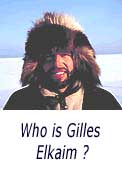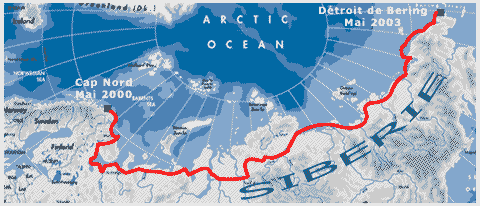|
||||||||||||||||||||||||||
|
|
|
|
Three summers and winters to cross, with kayak and sledge, the Eurasian Continent from the Cape North to the Bering Strait. This is the original adventure attempted by the Frenchman, Gilles Elkaim, whose ambition is to relive the great migrations of the peoples of the Siberian Arctic. Fishing, hunting, journeys across the tundra where he will have to live with cold, blizzard and isolation. For his 10,000km half-tour of the world in the North of the Polar Circle, Gilles will be looking out for human company; those numerous, often forgotten Arctic minorities: Saami of Kola, Nenets of Yamal, Dolganes and Nganassanes of Taïmir, Evenks, Evenes and Youkhaguirs of Yakoutie, Tchouktches and Yuit of Tchoukotka. All are fighting these days to preserve their land and their identity. No language problems here: Gilles, thanks to his Siberian wife, speaks Russian.
As the majority if the itinerary is located in a strictly regulated border area, the challenge proves to be as much administrative as sporting. Faithful to a certain travel ethic, the logistics of the expedition will be limited to a simple exchange of summer/winter equipment. The few nomadic localities and encampments along the route will ensure resupply, while the occasional hunting and fishing will complete the rations. The reindeer harnessed to the sledge will be used inland, with human traction taking over for crossing the frozen arms of the sea and the pack ice. Although this theatre of adventure is at the ends of the earth, Gilles's idea is nevertheless to develop cultural exchange and to sensitise the public to the preservation of the environment. Is not the survival of our planet in the hands of each and every one of us?
|




